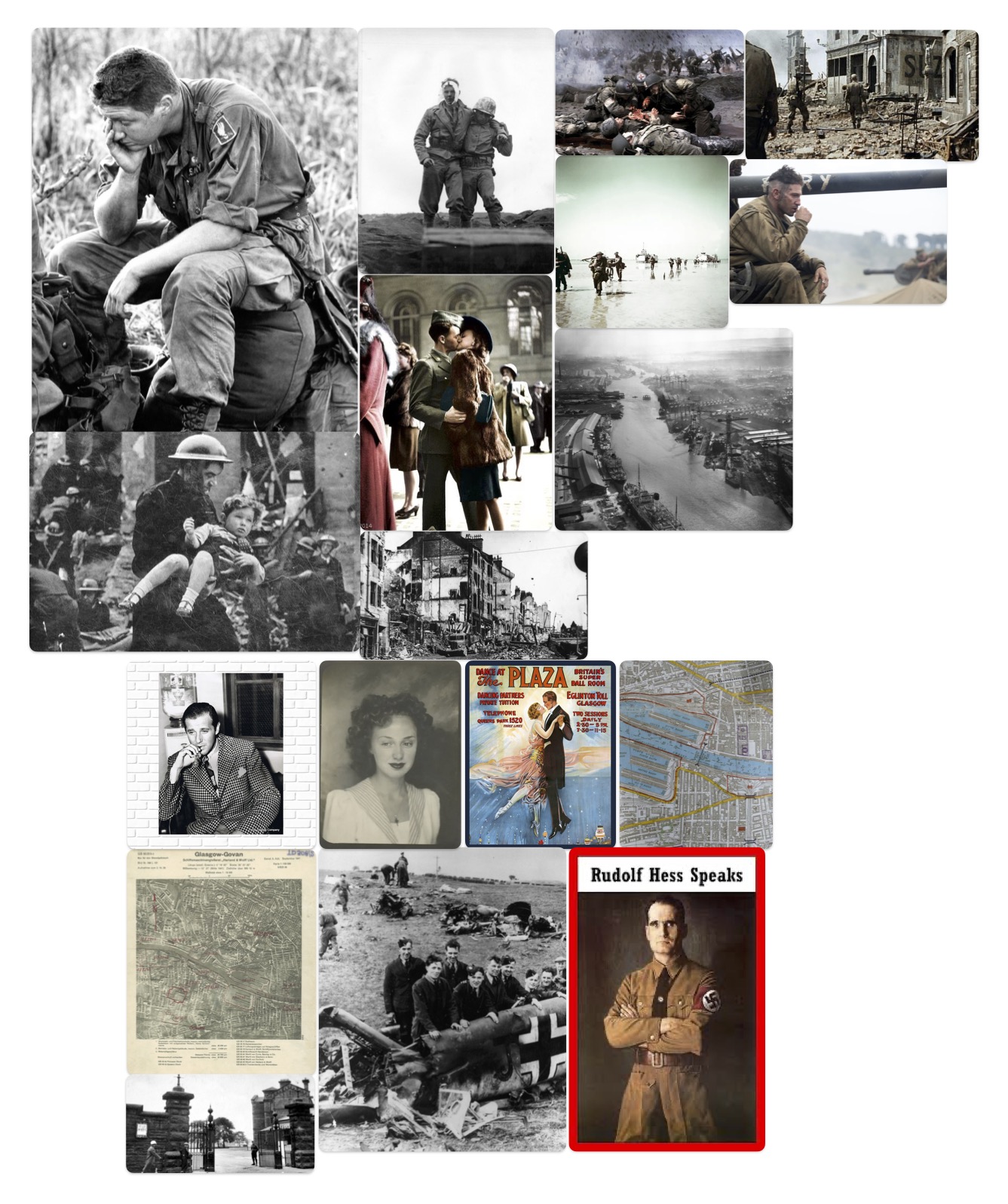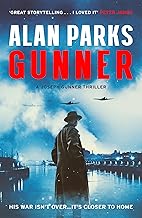Research. Different people do it different ways. I mainly do it via pictures. Whether it is the McCoy books or the new Gunner one, pictures play a huge part in how I write.
It’s probably a hangover from the old job. At Warners I used to do mood boards with bands. You would gather pictures of what they wanted to look like, what kind of photography inspired them, what they wanted to wear, what kind of typefaces they liked. Examples of all these would go on a mood board.
That would then become a kind of guide to what the band were about and a way of keeping on track. Same thing with the books. The Gunner mood board has pictures that are out of historical context, that might not seem to make much sense, but they are there for a reason. They evoke an atmosphere.

The main picture I had was of an American soldier in the Vietnam war. He’s sitting on his kit bag, head in hand, looking defeated. It’s how I imagined Joseph Gunner to be in the days before he was injured. World weary and resigned to what was happening to him. The fact the man in the picture is wearing a different uniform and it’s thirty years later doesn’t matter. I don’t imagine people feel much different whatever war they are in.
Some of the other pictures are there for more realistic purposes. What did the Glasgow docks look like? A map showing where the bombs fell. What did a bombed street in Glasgow look like? These kinds of pictures are what I call ‘hard research’. They are there to provide accurate information as much as anything else. To help you not make mistakes. Not that I still didn’t. A very nice copyeditor who is a history expert read the book and provided me with a VERY LONG list of inaccuracies. Who knew jeeps weren’t called jeeps until 1944? Not me.
‘Soft research’ is a different kind of thing. It’s about evoking a time or an atmosphere. The couple kissing in the railway station is a good example. Nothing like this happens in the book but it must be what people were thinking of. When they would be reunited with their loved ones. If they would be reunited with their loved ones. Would they get back to the kind of life that they had before the war? That feeling underpins a lot of the action in the book, its why people do what they do. They urge to get home keeps them going.
The picture of the dapper guy in the houndstooth jacket is there because some people in the novel aren’t at war, they are making the best of the opportunities, criminal or otherwise that wartime Glasgow can offer. The black market made a lot of people rich. Looting bombed warehouses added to the pot. The schemes and backhanders that operated with goods and services being supplied via army contracts meant some people came out the war an awful lot richer than when they went in.
As someone wisely said, ‘You should do the research for your book then forget ninety percent of it.’ I think research should be there for two reasons. Firstly, to stop you making an arse of yourself and secondly to help transport you to the place you are writing about. If you have knowledge of how things worked and how life was in Glasgow in 1941 you can then write your story ‘on top of it’ for want of a better phrase. The little details that help illuminate the time and the story will hopefully appear without being crowbarred in.
Joseph Gunner and his story isn’t really about WW2. It’s about people who are living their lives, doing what they do, against that backdrop. It doesn’t matter that he’s an American soldier in Vietnam. When I look at that picture, I see Gunner in France in 1941 and I can feel what he is feeling. That’s really when picture research works.
READ OUR REVIEW

Baskerville
RRP: £16.99 hbk
Released: July 17 2025
SHOTSMAG would like to thank Charlotte Hutchinson of John Murray / Baskerville for organising this feature. and, off course, Alan for writing it!